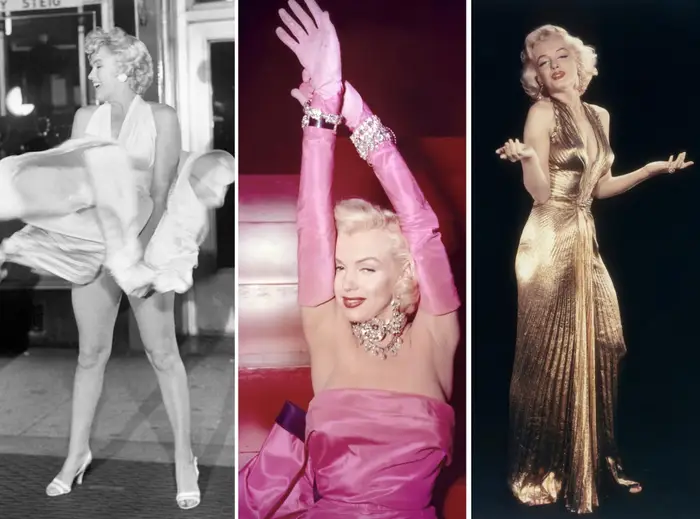priceless-stories.org – In the last years of Marilyn Monroe’s life, the world watched as the Hollywood icon grappled with the pressures of fame, the complexities of her personal life, and the challenges of her career. These final years, marked by a series of highs and lows, provide a poignant glimpse into the life of a woman who had become a symbol of glamour and allure, yet struggled with profound personal demons.
The Professional Struggle
Marilyn Monroe’s career, which had seen its zenith with films like “Gentlemen Prefer Blondes” and “Some Like It Hot,” began to face challenges. Her last completed film, “The Misfits” (1961), co-starring Clark Gable and directed by John Huston, was a project she had high hopes for. However, the production was fraught with difficulties, including her own health issues and the tumultuous end of her marriage to playwright Arthur Miller. Despite its star-studded cast and her personal investment in the project, “The Misfits” was not the success she had hoped for.
Her next project, “Something’s Got to Give,” was a comedy that promised a return to form for Monroe. However, her chronic lateness and absences due to illness led to her being fired from the film, a decision that was later reversed. Unfortunately, Monroe’s untimely death in 1962 meant the film was never completed.
Personal Turmoil
The last years of Monroe’s life were marked by intense personal turmoil. Her marriages to baseball legend Joe DiMaggio and playwright Arthur Miller had ended, leaving her feeling isolated and misunderstood. Her relationships with the Kennedy brothers, President John F. Kennedy and Attorney General Robert F. Kennedy, added another layer of complexity to her life, entangling her in political intrigue and further damaging her public image.
Monroe’s struggle with mental health and substance abuse was well-documented. She sought treatment and was hospitalized on several occasions, battling depression and anxiety. Her reliance on prescription drugs, meant to alleviate her suffering, ultimately contributed to her death.
The Legacy
Marilyn Monroe’s death on August 5, 1962, at the age of 36, shocked the world. The circumstances of her death, ruled a probable suicide by barbiturate overdose, have fueled decades of speculation and conspiracy theories. Yet, beyond the mystery and the tragedy, Monroe’s legacy as an actress, a sex symbol, and a cultural icon endures.
Her films continue to be celebrated, and her image remains one of the most recognizable in the world. Monroe’s life and career have been the subject of numerous books, films, and documentaries, each seeking to uncover the woman behind the legend.
Conclusion
The last years of Marilyn Monroe’s life were a tumultuous period, marked by professional setbacks and personal suffering. Yet, it was also a time of resilience and determination, as she fought to overcome her challenges and redefine her career. Monroe’s legacy is a testament to her enduring appeal and the complex nature of fame. She remains an icon of Hollywood’s golden age, whose life and work continue to captivate and inspire.
